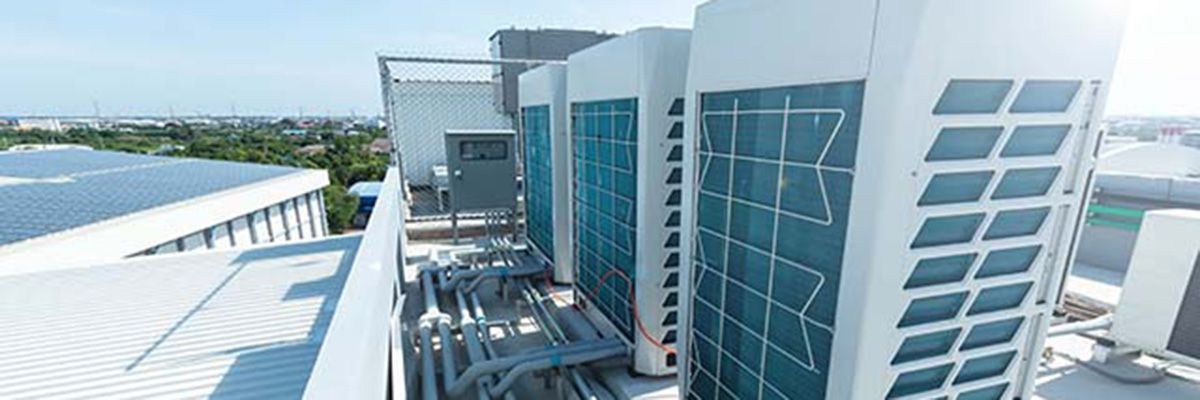
How does variable flow in HVAC systems reduce energy costs?
Variable flow may sound like a pretty niche term, but it turns out to be a technique that can have a significant positive impact on reducing energy costs. How? Read on to find out.
Is there a more pressing and familiar question being asked today than how to reduce energy costs? Possibly not. With the world in the throes of an energy crisis hallmarked by spiraling prices and problematic supply, the importance of saving energy is near to the top of the agenda for businesses.
How, then, to do it? How can energy costs be brought down to more acceptable and manageable levels? Among other industries, heating, ventilation, and air conditioning (HVAC) technology is likely to play an important role. One reason for this is that HVAC systems are ubiquitous. They are commonly found in a wide array of commercial buildings including offices, schools, retail outlets, factories, and manufacturing plants, and more. These systems generally account for about 40% of a building’s total energy costs.
In keeping with industry trends, in recent years HVAC systems have generally become more energy efficient, in the process reducing energy usage alongside carbon emissions. But there’s a great leap forward available that enables substantial energy savings to be achieved in a single step. That is, through a shift from a fixed flow system to a variable flow system.
What is a variable flow system?
A variable flow system uses a Variable Speed Drive (VSD) – in essence an electronic power controller – to enable far more precise control of the speed and torque of an alternating current (AC) induction motor that, otherwise, would typically run at a fixed speed. The speed of the motor that incorporates a VSD is controlled by varying the frequency of the current that powers the motor. This is achieved via the use of a rectifier circuit that converts AC to DC voltage at pre-specified voltage and amperage levels.
Why use a variable flow system?
Commercial buildings’ legacy HVAC installations commonly use centrifugal fans and pumps that drive motors to run only at full speed. When this happens, the electrical power is constantly in proportion to a metric of the speed of the motor shaft. If the latter is running at maximum, then the power consumption too will be at or near to maximum. This is clearly inefficient.
In contrast, when a VSD is installed, the HVAC motor’s power usage can be electronically reduced, controlling flow by lowering motor speed. Fan and pump usage can then be optimized, which results in significant energy savings. And it’s not just energy savings that accrue. HVAC plants no longer default run at capacity all of the time so by lowering motor speed there’s also a reduction in wear and tear to the system’s component parts. That results in reduced maintenance costs and more limited need for replacement parts. That really matters if you have a nationwide footprint of buildings, retail locations or other premises – because local conditions can be widely different.
The Benefits of a variable flow system
Let’s summarize the benefits.
1. The first and most obvious benefit is reduced energy costs. Legacy HVAC systems hit peak energy usage the moment they’re turned on and turning on a blower and compressor at full power uses significant amounts of electricity. That’s not cheap. In contrast, variable flow systems start slowly and build up to full power, saving significant amounts along the way.
2. Variable flow systems reduce excess moisture in the air. In so doing, a variable flow system can balance the humidity and temperature in a building and reduce the need for other powered devices such as dehumidifiers.
3. The lower speed fan operating under variable flow means the HVAC system can operate for longer periods. This increases the amount of time that indoor air is filtered through the system, thereby improving its quality as irritants such as pollen, or other allergens, are reduced by increased filtration.
A step towards smart HVAC systems
A truly energy efficient system – which generates real cash savings – is a network monitored and controlled “smart” HVAC solution. This would enable heating and air conditioning to operate constantly at optimal levels. It would also, via system performance analytics, allow a building manager to use data to reduce consumption and costs moving forward as well as to identify faults and improve HVAC performance. With communication-card enabled VSDs integrated into the Building Management System (BMS), this becomes possible as wasteful energy use is effectively eliminated.
Motors are heavy consumers of energy. Variable flow approaches in HVAC systems should be key components of energy-efficiency and cost-savings policies. That many states now offer tax incentives for installing them underlines this in addition to section 179D of the US tax code, which provides valuable tax benefits for energy efficient buildings directly related to HVAC performance. This allows deductions for energy-efficient commercial buildings that were made permanent under the Consolidated Appropriations Act of 2021.
This benefit of a tax deduction of up to $1.80 per square foot available to owners or designers of commercial buildings or systems that demonstrate a 50% reduction in energy usage accomplished solely through improvements to the heating, cooling, ventilation, hot water, and interior lighting systems, is significant. Partial deductions of up to $0.60 per square foot can also be taken for qualifying measures.
All of which adds up – and we’re here to help you. So, if you want to discover the benefits variable flow can bring to your business, please get in touch with us through